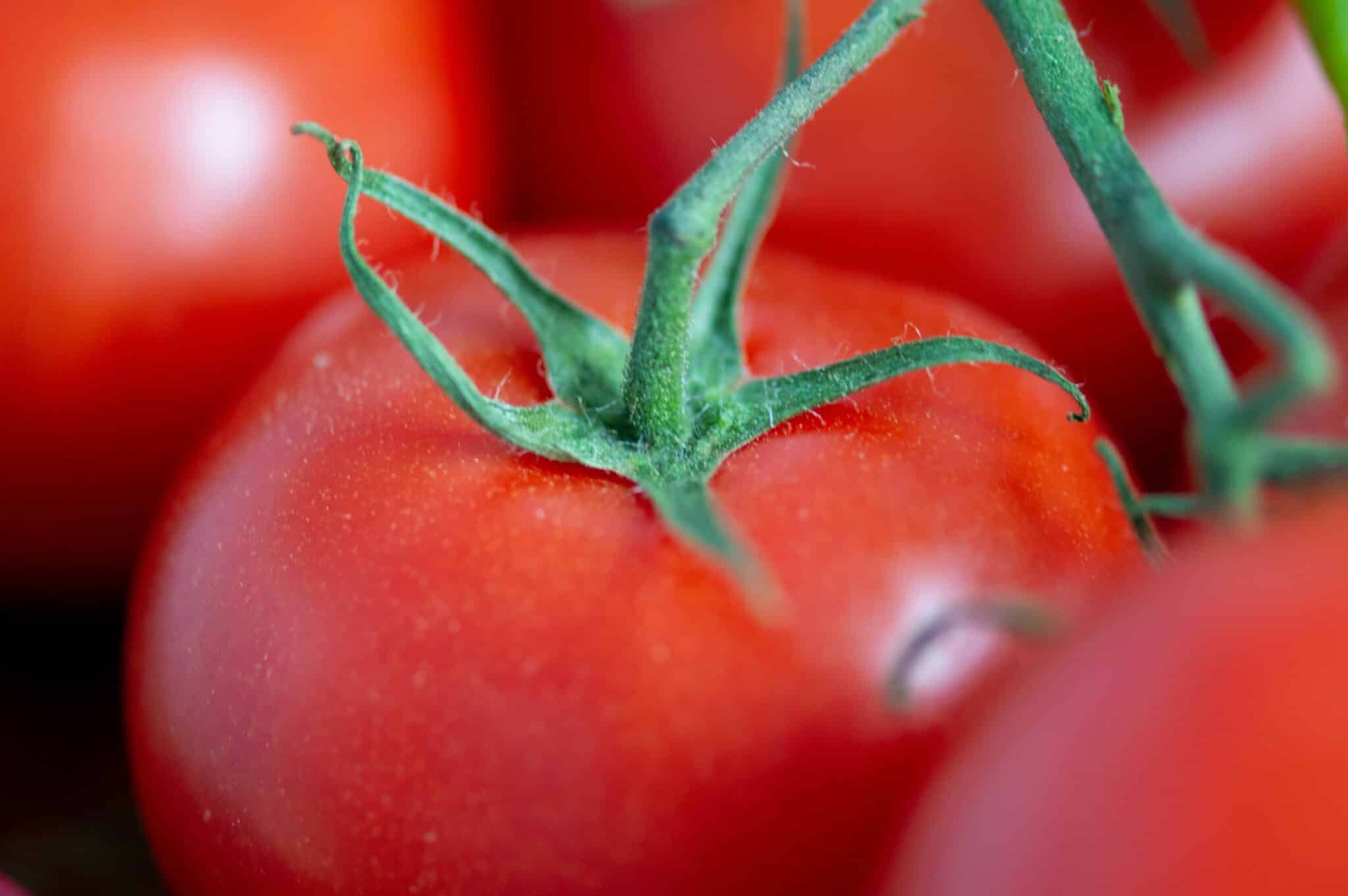Top 7 Vegetables to Grow in Spring

Spring is the perfect time of year for gardening, and there’s no better time to plant a veggie garden. Many of the vegetables that you grow in Spring will be ready just in time for you to enjoy them in delicious, fresh Summer salads. Homegrown food really is the best way to eat!
From the start of September through to the end of November, the southeast region of Australia reliably enjoys moist and mildly sunny conditions that are ideal for starting a healthy and fast-growing garden. Seasonal vegetables and herbs will thrive in this weather.
For other relevant info, check out our other guides on Preparing Your Garden for Spring and How To Grow a Vegetable Garden. For non-veggie gardens, we’ve also published a helpful guide on The 10 Best Plants to Plant in Spring.
Our Favourite Spring Vegetables to Plant
Here are our 10 favourite backyard crops to grow in Spring. Of course, this is just the beginning of all the different edible plants that you can grow in your garden – the best thing about growing your own food is that it’s all up to you!
1. Tomatoes
As a proudly Italian-owned family business, it might not surprise you that tomatoes are one of our favourite vegetables to grow once the warmer weather comes around! These juicy little wonders come in so many unique varieties, and now is the perfect time to plant them.
Plant your tomatoes from late September to early October, unless conditions are still frosty. These plants absolutely love warmth, but they don’t do well at all with the cold. If you’re experiencing a particularly frosty spring, you may have to wait until conditions improve. Ideally, the soil should be around 20 degrees Celsius or 15 degrees at a minimum.
Space tomatoes 30-50cm apart in a full sun position, keep well mulched and fertilise monthly with a high-calcium fertiliser, as calcium deficiency can be a common issue with tomatoes. If you’re transplanting a young plant, dig a very deep hole and plant to roughly halfway up the stem, tucking the tips of the first leaves into the soil. This will help your tomatoes produce a much healthier root system.
Water tomatoes every morning when young, with less frequent watering as they begin to mature. You still need to be careful to not let your soil become too soggy, so take a break if it isn’t draining. Pick tomatoes when just ripe and firm for fresh salads, or let them start to get extra-ripe for flavourful soups and pasta sauces. Bellissimo!
2. Lettuce
Lettuce is the classic leafy green to plant in your garden. It may start to struggle in the harsh Summer heat, so plant lettuce in early spring to get the most out of your plant. Soil temps of around 10-20 degrees celsius are needed. These plants grow fast, so you should be eating lettuce leaves within a month or two!
The best thing about lettuce is that it’s super easy for anyone to grow, making it a great vegetable for beginner gardeners. Storebought lettuce can also become quite expensive at times, so having some in your yard can help you to avoid those crazy lettuce prices.
Space lettuce around 20cm apart and plant just below the surface of your soil – go too deep and it may not grow. Water at least twice weekly for a better flavour and lay mulch to keep the soil consistently moist, as dry soil can cause bitter lettuce. This is a pretty hungry plant, so try to fertilise with plant food fortnightly or even weekly in the early stages of growth.
The most important thing to watch out for with lettuce is pests like aphids and slugs. Your lettuce is so tasty that everybody wants a little nibble! Mixing chilli or vinegar with water and spraying these bugs is a natural way to keep them off your leaves without using a pesticide.
3. Basil
Speaking of those tasty leafy greens, a warm Spring is an excellent time to get started with a Basil crop. It’s also a great time to plant other Mediterranean herbs like parsley, thyme, coriander and oregano. Herb gardens can easily be grown on an apartment windowsill.
When to plant basil depends on the weather, as it will need warm soil to grow – a bit like your tomatoes. Once you experience a week (or so) of 10-20 degree days, and you’re confident there will be no more morning frosts, it’s time to get planting. Usually, Melbourne starts to see these conditions in mid-October. If not, seed them inside and move plants outside when it heats up.
Keep the soil around your basil moist once planted, but avoid getting the leaves too drenched. Every 3 days or so should be fine for a watering. Mulch can help greatly to keep moisture in, and a light feed of fertiliser or compost every 4-6 weeks will also help your basil with growth. Prune back any flowers and top leaves weekly, to encourage leaf growth instead. Basil that has flowered tends to have less flavoursome leaves.
This tasty & refreshing herb pairs well with tomatoes, and the relationship between these two actually runs very deep! They have a symbiotic relationship, and planting them together will help to protect the tomato fruits from pests like aphids, fruit flies and mosquitoe4
4. Cucumbers
Cucumbers make the perfect refreshing snack in Summer. Like tomato and basil, these are very much a ‘warm soil’ plant (15 to 20 degrees is ideal) so it’s safest to plant cucumbers from mid-October when the chance of frost and cold temperatures is much lower. They like 6-8 hours of full sun a day!
Plant your cucumbers around 3cm deep and at least 30cm apart. These love a fertile environment and will benefit greatly from well-composted soil, weekly deep watering and fortnightly fertilising. You should start to see Cucumbers on your vine in 6-8 weeks, and it’s best to harvest the vegetables once they reach a length of around 10-15cm.
Cucumbers grow on creeping vines that will crawl all over your garden, so it’s good to install a trellis to give the plant somewhere to go. Keeping the fruits high off of the soil will also drastically lower the risk of fungal diseases, mould and other issues caused by dampness.
Cucumbers rely heavily on pollination to grow, so if you’re seeing a meagre crop it might be because you don’t have enough bees in your yard. Check out this great resource from The ABC on the best ways to attract more bees to your garde
5. Chillies
For those who like it hot, chillies are a great Spring crop to grow. Many species originate from the equatorial tropics, so they absolutely love the mixture of heat and moisture that comes with the Australian spring.
Like many other spring vegetables, Chillies need consistent soil temperatures of around 10-20 degrees celsius to grow well. Water every 2 or 3 days to ensure the soil is moist but not soggy, and use a stake to support the fragile branches and shallow root systems. Adding too much fertiliser to chillies will lead to more foliage and less fruit, so take it easy.
Placement is also important with chillies. Placing them too close to capsicums or other varieties of chillies can sometimes result in cross-pollination and lead to unpredictable levels of spice, so try not to plant a mild sweet pepper next to a real firebreather if you can avoid it. For most chillies, give them around 50cm of space.
Hot tip: Your matured chilli plants may appear to die over the winter, but don’t rip them out! These persistent plants have a habit of coming back strong in Spring and Summer when properly cared for. Prune back decisively and keep their pots free of weeds, pests and fungal infections for the best chances of a chilli comeback.
6. Beans
Beans are another warm-weather vegetable, with a preference for soil temperatures of at least 10 degrees Celsius. Most varieties of beans, including the green bean, can be sown in early Spring and harvested by mid Summer. They taste best when picked before they start to get lumpy.
Beans are a climbing plant that will need adequate air, light and space to avoid suffering fungal diseases. Stake your plants for support and space them at least 30cm apart for best results. They prefer rich & moist soil but dislike wet leaves and overwatering, so be sure to water regularly and deeply once or twice a week without spraying the foliage.
Good drainage and mulch will go a long way to caring for your beans, but regular fertilising is not necessary. This is because beans are capable of fixing their own nitrogen levels! For this reason, planting beans is a handy way to help repair and improve the soil in your garden bed.
7. Zucchini
As a vine-growing vegetable, Zucchini is another great plant to grow up a trellis or run along the ground. Their preferred conditions are similar to those of cucumbers; they like to be planted shallowly and spaced 30cm apart, and they enjoy 6-8 hours of full sun and a regular soil temperature of around 15 degrees Celcius.
Planting in Spring will give your plant time to establish itself before summer, giving it a better chance of enduring the hotter temperatures. Zucchinis are slow and take around 2 months to sprout, but they tend to deliver a massive crop when they do finally bloom.
Improving your soil with compost or manure around a week before planting can help get the conditions right for your Zucchini. Once planted, fertilise monthly until they begin to sprout, and then add liquid fertiliser frequently throughout the fruiting season. Dry soil can lead to bitter Zucchinis, so water daily at first and use mulch to help trap moisture in the ground.
Summary
To recap, we’ve put together a quick table that summarises some of the most important tips for each plant. As seasonal vegetables, many of these plants have similar needs – especially when it comes to sunlight and soil temperature.
| Plants | Placement | Sunlight Levels | Watering | Soil Temperature | Supports Needed |
| Tomatoes | 30-50cm apart | 6-8hrs Full Sun | Daily when young, less when mature | 15-20℃ | Stake |
| Lettuce | 20cm apart | 6-8hrs Full Sun, can tolerate partial shade | Twice weekly | 10-20℃ | No |
| Basil | 30cm apart, place near tomatoes | 6-8hrs Full Sun | Every 3 days | 10-20℃ | No |
| Cucumbers | 30cm apart | 6-8hrs Full Sun | Deep water weekly, more on hot days | 10-20℃ | Trellis |
| Chillies | 50cm apart, away from capsicums | 6-8hrs Full Sun | Every 2 or 3 days | 10-20℃ | No |
| Beans | 30cm apart | 6-8hrs Full Sun | Deep water weekly, avoid foliage | At least 10℃ | Trellis or Stake |
| Zucchini | 30cm apart | 6-8hrs Full Sun | Daily when young, more when mature | Around 15℃ | Trellis |
These are just some of the delicious vegetables that you can plant in Spring – there are plenty more veggies out there! Growing your own food is one of the most fulfilling ways to get engaged with gardening.
Don’t be afraid to ask our friendly team if you have any specific questions about growing your Spring vegetable garden. You can get your gardening journey started at one of our Diaco’s Garden Centres or our Online Garden Store.
-
 7, Mar, 2025
7, Mar, 202510 Plants That Boost Office Wellbeing and Productivity
Modern offices can feel removed from the natural world. You... -
 20, Feb, 2025
20, Feb, 2025Avoid These 5 Gardenia Growing Mistakes for Stunning Blooms
Gardenias are loved for their sweet fragrance and stunning white... -
 23, Jan, 2025
23, Jan, 2025Creating Harmony: Ideal Companion Plants for Your Gardenias
Gardenias are some of the most beloved plants in Australian...


